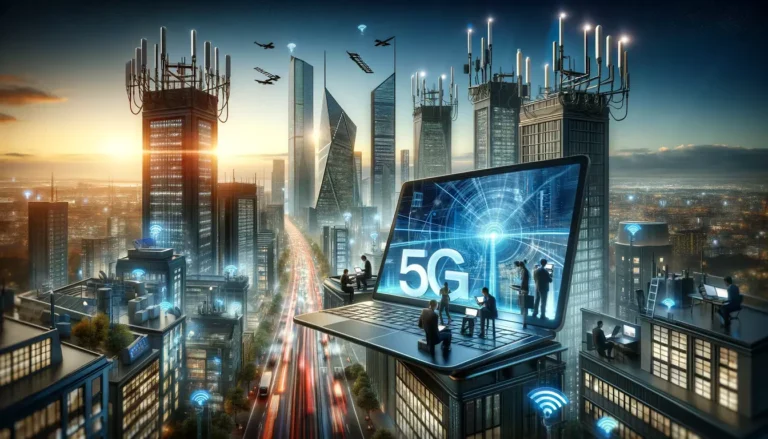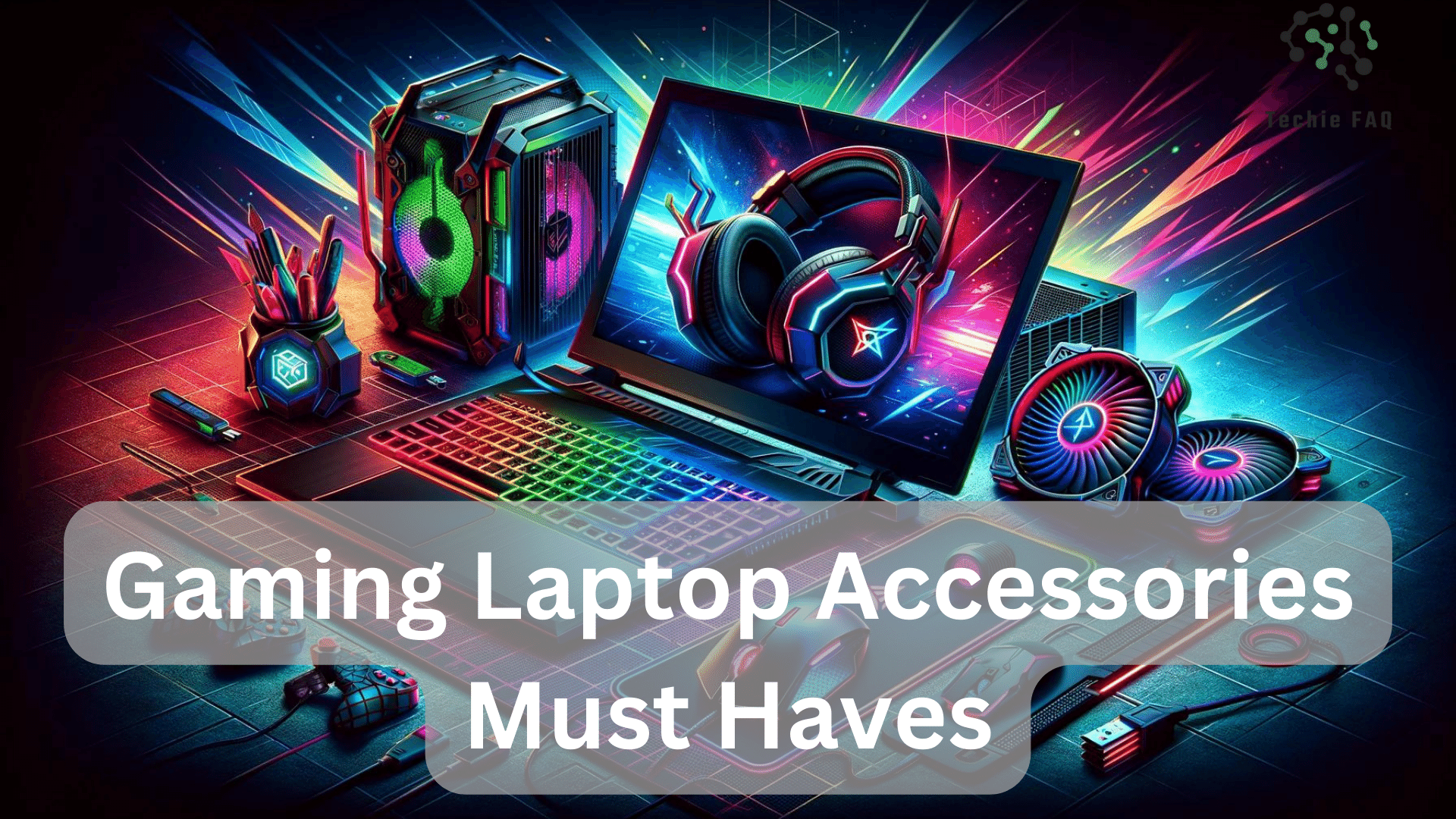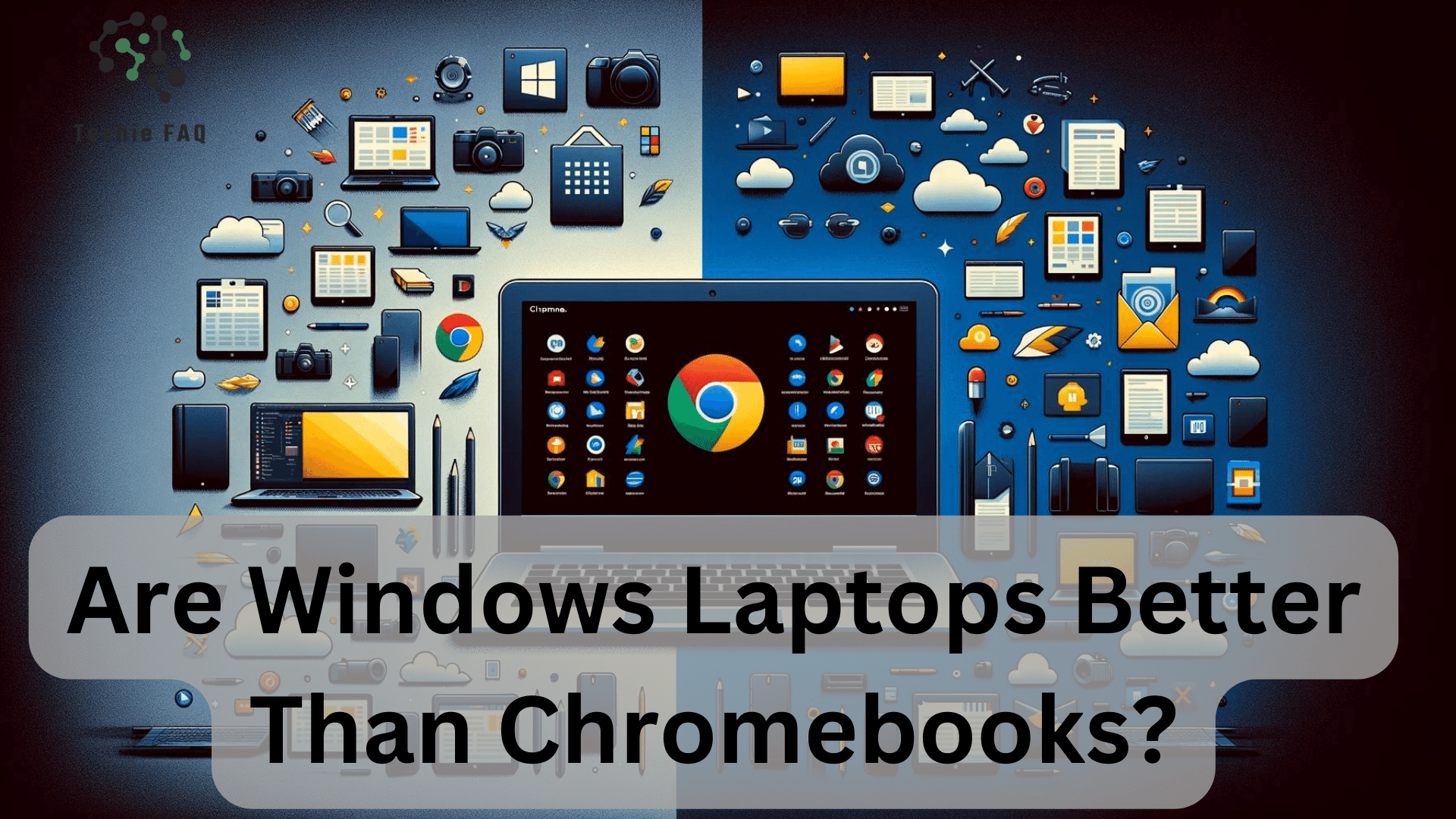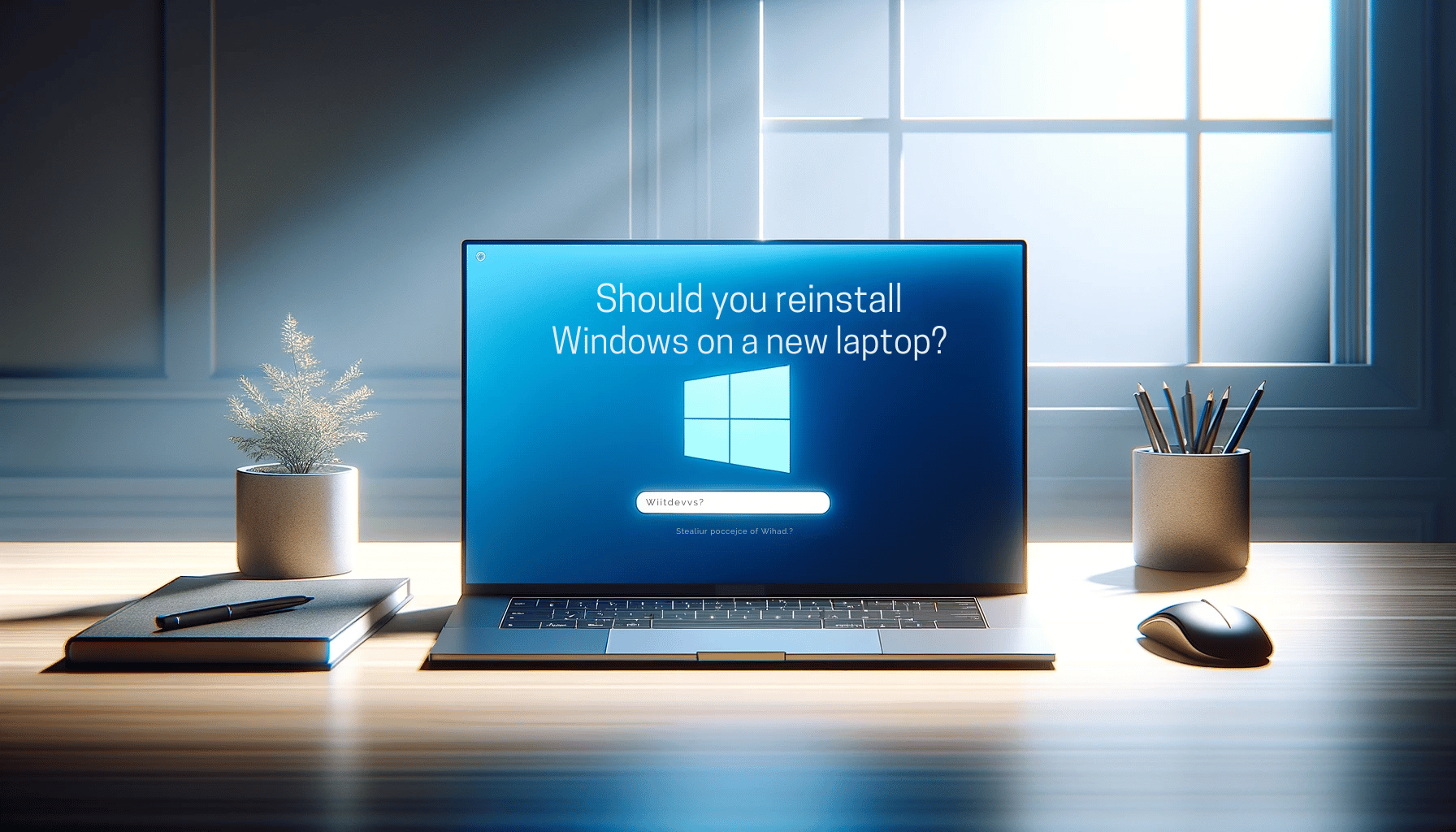As we stand on the cusp of a new technological era, 5G technology is poised to revolutionize how our laptops connect to the internet, promising speeds that were once unimaginable. This leap forward isn’t just about faster browsing; it’s set to redefine remote work, streaming, and the overall online experience. But, it’s crucial to temper our excitement with a realistic understanding of 5G’s current limitations and its gradual rollout across the United States.
Experts like Brian X. Chen have urged the public to manage their expectations, highlighting that the full potential of 5G won’t be realized overnight. Meanwhile, institutions like the Progressive Policy Institute underline the importance of 5G in facilitating widespread remote work, suggesting a future where our laptops are always connected, anytime, anywhere. This blend of promise and pragmatism sets the stage for an in-depth exploration of 5G’s impact on future laptop connectivity, a topic that’s as complex as it is fascinating.
Evolution of Laptop Connectivity
As we investigate deeper into the intriguing world of internet technology, it’s impossible not to marvel at the journey laptop connectivity has made over the years. From the days of dial-up to the current anticipation around 5G, every leap has significantly altered how we interact with the digital universe. Let’s unpack this evolution, examining the intricate canvas of connectivity that’s been woven around our beloved laptops.
Pre-5G Connectivity
Before we jump into the 5G frenzy, it’s vital to understand the foundation it’s built upon. The concept of laptop connectivity isn’t new; it’s a tale that began decades ago. Initially, getting online meant grappling with cables and the symphony of dial-up tones. It was during these early days that the internet was more of a novelty than the necessity it is today. Then came wireless fidelity, or as we better know it, Wi-Fi. This innovation was nothing short of revolutionary, promising a tetherless existence and altering our interactions with cyberspace.
But, Wi-Fi wasn’t the only star in the galaxy of connectivity. The introduction of 3G and later 4G LTE unfolded new chapters of internet speed and reliability, enabling a mobile-first approach to digital content. The transition from 3G to 4G in particular was groundbreaking, facilitating faster streaming, more efficient browsing, and a smooth, responsive user experience. Even though these advancements, each iteration had its limitations – be it in speed, coverage, or capacity. It’s these very limitations that set the stage for 5G’s entrance.
Transition to 5G
As we stand on the brink of a 5G revolution, it’s clear this isn’t just another step; it’s a giant leap. Imagine downloading entire seasons of your favorite show in seconds or attending a high-definition virtual meeting without a glitch – that’s the promise of 5G. But what does this mean for laptop connectivity? It spells the end of traditional boundaries, ushering in an era of seamless, ultra-fast internet access that’s always on and everywhere.
Operators are gearing up for this transformation, experimenting with innovative billing strategies and bundled packages to ensure that the leap to 5G is as smooth as it is swift. The aim is to make 5G as ubiquitous as electricity, making constant connectivity a reality for laptops no matter where you are. This means not just faster speeds but also more reliable connections, allowing for real-time collaboration, immersive augmented reality experiences, and a new dimension of cloud computing.
Also, 5G is set to redefine the concept of working remotely. The Progressive Policy Institute highlights how the ongoing shift to widespread remote work underlines the urgency for broad 5G adoption. Enhanced connectivity isn’t just a matter of convenience; it’s becoming a necessity, a lifeline that keeps the wheels of productivity turning.
Advantages of 5G for Laptop Connectivity
In today’s rapidly evolving digital world, the imminent rollout of 5G technology stands as a beacon of transformative change, particularly for laptop connectivity. As we edge closer to this new era, it’s essential to investigate into how 5G will redefine the way we use and perceive laptops in our daily lives and professional endeavors.
Increased Speeds
Imagine downloading a full HD movie in just a few seconds or seamlessly streaming high-definition video conferences without a hint of buffering. With 5G, this level of speed isn’t just a dream; it’s becoming a reality. The leap from 4G to 5G is monumental, offering peak data rate transmission speeds of up to 10 Gbps. This is not merely an incremental improvement; it’s a revolution that promises to overhaul our online experiences.
For laptops, this means dramatically reduced download and upload times, opening new doors for content creators, gamers, and professionals alike. The agility 5G offers will enable real-time collaboration on a global scale, without the limitations imposed by slower connections. For instance, architects and designers can share complex 3D models in seconds, making remote work more efficient and interactive.
Lower Latency
Latency refers to the delay before a transfer of data begins following an instruction for its transfer. In the context of 5G, we’re looking at a reduction to ultralow latency of 1ms. This is a game-changer for anyone relying on real-time applications. For laptops, lower latency means more responsive cloud services, virtual desktop interfaces, and online gaming experiences.
Think about the implications for augmented reality (AR) and virtual reality (VR) applications. These technologies require fast, real-time processing to deliver immersive experiences. With 5G, laptops could easily handle AR and VR applications, making them more viable for education, training, and entertainment directly from our personal devices. It’s a leap towards more interactive and engaging digital experiences that were previously constrained by technological limitations.
Improved Reliability
One of the critical demands from any connectivity solution today is reliability. We’ve all experienced the frustration of dropped connections during important video calls or while submitting crucial work online. 5G promises to alleviate these pain points with 99.9% ultra-reliability. This level of consistency in connection isn’t just an upgrade; it’s a necessity for the future of remote work and digital collaboration.
For laptops, improved reliability means that professionals and students alike can count on their devices to stay connected when it matters most. Whether it’s closing a deal on a video conference or attending an important lecture online, 5G ensures that your laptop remains an effective tool for communication and collaboration. Also, with the proliferation of IoT devices, this reliability extends beyond our laptops to a vast network of connected devices in our homes and workplaces, enhancing productivity and the user experience.
As we stand on the brink of a 5G future, the anticipation for what’s possible with enhanced laptop connectivity continues to grow. The integration of 5G technology into our laptops promises not only to enhance our current capabilities but to redefine what we consider possible in a connected world. The implications extend far beyond faster browsing and download speeds, touching on realms of real-time interactivity and reliability that will shape the future of digital innovation.
Challenges and Concerns
As I investigate deeper into the transformative potential of 5G for future laptop connectivity, it’s crucial to balance our optimism with a healthy dose of reality. While the benefits are immense, ranging from increased speeds to revolutionary applications, several challenges and concerns loom on the horizon. Let’s explore these potential pitfalls and consider how they might influence the deployment and use of 5G in our connected devices.
Compatibility Issues
One of the most immediate hurdles that comes to mind when discussing the integration of 5G technology into laptops is compatibility. As we stand on the cusp of this new technological era, it’s evident that not all devices are ready to embrace the 5G revolution. The hardware requirements for 5G are significantly more advanced than those for previous generations. This presents a unique challenge for laptop manufacturers and users alike.
For instance, incorporating 5G modems into laptops requires not just an understanding of the technology, but also a reimagining of design and architecture. The laptops of tomorrow need to support the high-frequency bands used by 5G, requiring new antenna designs that can handle the ultra-fast data rates without compromising the device’s form factor or battery life. This often means a significant investment in R&D to develop devices that are both 5G compatible and user-friendly.
Also, there’s the issue of backward compatibility. As we transition to 5G, there will be a considerable period where 4G networks still play a critical role. Ensuring that new laptops can seamlessly switch between 5G and 4G networks, without causing disruption or degradation in service, is a technical challenge that manufacturers must address. The goal is to provide users with a smooth, uninterrupted experience, irrespective of the network conditions or coverage.
Security Concerns
Let’s talk about a topic that’s close to my heart – security. The advent of 5G promises to usher in an era of unprecedented connectivity, but it also opens up a Pandora’s box of security challenges. The very features that make 5G so attractive, such as higher data rates and lower latency, also create potential vulnerabilities that cybercriminals could exploit.
5G networks are anticipated to be vastly more complex than their predecessors. This complexity, coupled with the increase in the volume and sensitivity of the data being transmitted, dramatically amplifies the potential for security breaches. We’re not just talking about the risk of data theft or spying; the interconnected nature of 5G networks means that a breach in one area could potentially have a cascading effect, disrupting services and putting critical infrastructure at risk.
Future Trends in Laptop Connectivity
In the ever-evolving world of technology, the emergence of 5G has opened the door to a myriad of possibilities, especially when it comes to connectivity. Laptops, which were once tied down by the limitations of previous network generations, are on the brink of a major transformation. Let’s jump into some of the future trends that are set to redefine laptop connectivity in the age of 5G.
Integration of IoT Devices
Imagine stepping into your home office, and without a single click, your laptop seamlessly connects to your smart lighting, adjusts the thermostat, and even cues up your favorite playlist on the smart speakers. This is not a scene from a sci-fi movie but a near future reality, thanks to the integration of the Internet of Things (IoT) devices with 5G-enabled laptops.
The power of 5G brings with it unparalleled speed and reliability, breaking down the communication barriers that previously existed between devices. IoT integration means your laptop can become the central hub for a network of interconnected devices, offering a level of automation and intelligence we’ve only just begun to explore. Whether it’s for productivity, entertainment, or home management, the possibilities are limitless.
One fascinating aspect of this integration is the enhancement of real-time data exchange. For instance, your laptop could receive immediate updates from your smart devices, enabling it to make decisions or provide recommendations based on the latest information. This could revolutionize fields such as telemedicine, where real-time health monitoring via wearable IoT devices could be directly connected to laptops, providing healthcare professionals with instant data for better patient care.
Cloud Computing Enhancements
The synergy between 5G and cloud computing is akin to revealing a new dimension of capability for laptops. I’m not just talking about faster download speeds or smoother streaming services. I’m referring to a profound shift in how we perceive the role of laptops in computing.
With the advent of 5G, cloud computing becomes more than just a storage solution; it evolves into an extension of the laptop’s computing power. Think about it, tasks that would normally require high-end hardware can be offloaded to the cloud, executed there, and the results seamlessly delivered to your screen. This means that even the most hardware-intensive applications, whether it’s video editing, 3D rendering, or complex simulations, become accessible on a regular laptop.
But here’s where it gets really interesting: the ultra-low latency offered by 5G could significantly enhance cloud gaming experiences. This bridging technology could enable gamers to play high-end games on their laptops without needing expensive graphics cards. All the heavy lifting is done in the cloud, and the interactive gaming experience is streamed to your laptop without perceptible delay.
Conclusion
5G technology is set to revolutionize how we use and perceive laptops, making them more powerful and versatile than ever. With the advent of IoT integration and enhanced cloud computing capabilities, our laptops will not just be tools for work but gateways to a new era of digital interaction and innovation. While challenges remain, the potential benefits far outweigh the hurdles. As we move forward, it’s clear that 5G will not just change the way our laptops connect to the world but also how the world connects to us. Embracing this change is not just about staying updated; it’s about revealing new possibilities for creativity, productivity, and connectivity. The future is here, and it’s incredibly exciting.
Frequently Asked Questions
How is 5G different from previous generations of wireless networks?
5G stands out for its incredibly fast data transmission speeds, capable of supporting more devices and handling larger volumes of data securely. Its smaller transmitters enable a denser network with lower power requirements. Notably, it offers lower latency and higher bandwidth compared to its predecessors, significantly enhancing user experiences in various applications.
How does 5G work?
5G operates through a network of cells using radio waves to connect devices to the internet, similar to previous generations but at significantly faster speeds. Innovations in cell technology allow 5G to transmit data up to 20 Gbps. This increase in speed and capacity is due to the use of a wider range of radio frequencies and the advancements in technology powering these networks.
How does 5G enable IoT?
The advent of 5G brings low latency and high bandwidth, essentials for the IoT ecosystem, allowing for an unparalleled number of devices to connect and interact in real-time. This connectivity enables scenarios like real-time data exchange from sensors in smart cities to cloud platforms, facilitating immediate adjustments to various parameters, like traffic flow.
How will 5G transform everyday consumer experiences?
5G promises to revolutionize consumer experiences with significantly faster internet speeds, enabling rapid streaming, quick downloads, and high-quality video calls. This leap in connectivity will enhance how people communicate, consume media, and interact with digital content, elevating the standard of digital experiences.
What changes can we expect in the workplace with the introduction of 5G?
The introduction of 5G in the workplace is set to bring enhanced bandwidth and drastically reduced latency. This will support better remote collaboration tools, make cloud services more seamless, and enable more reliable teleconferencing. These improvements will reshape the dynamics of how work is conducted, making remote and digital-first work environments more feasible and efficient.





